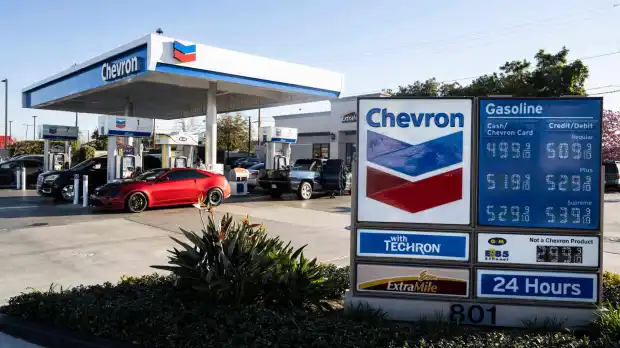Gasoline prices in California have surged beyond the $5 per gallon mark, well above the national average, prompting the state to contemplate a unique approach to curb these costs. With the aim of offering relief to drivers, California is considering implementing a profit margin cap on gasoline refiners, a strategy never before attempted.
This move is part of Californias broader efforts to navigate the complex transition towards cleaner transportation fuels. The state has been a leader in electric vehicle adoption, accounting for over one-third of the nation's sales. Additionally, more than half of the diesel fuel sold in California is derived from lower-carbon plant and animal oils. California has also set a precedent by planning to ban gasoline car sales by 2035, marking a significant step towards reducing greenhouse gas emissions.
Despite these advancements, the road to achieving these goals has proven to be challenging. The states plan to impose a profit margin cap has faced fierce opposition from major gasoline producers like Chevron. They argue that such a measure could backfire, potentially leading to even higher prices as companies might reduce production in response.
Andy Walz, president of Chevrons Americas Products business, expressed concerns about the regulatory environment in California, suggesting that it may discourage necessary investments. He emphasized that Californias unique operating costs, from land to wages, necessitate higher margins to cover expenses. Chevron, which holds nearly 20% market share in gasoline sales in California, contends that competition remains fierce, constraining their ability to raise prices significantly.
Critics of the proposed legislation, including Nevada governor Joe Lombardo, warn that a margin cap could cause a ripple effect, increasing gasoline prices in neighboring states like Nevada, which rely heavily on fuel from California refineries. Arizona also depends significantly on Californias gasoline supply chain.
The California Energy Commission is set to make pivotal decisions in the coming months, including whether to implement a margin cap and the penalties for exceeding it, by the end of the year. The commission was granted this authority under a law passed last year, with a mandate to ensure that any new regulations benefit consumers more than they cost.
Californias gasoline price premium has been a longstanding issue, exacerbated during crises such as the 2022 Russian invasion of Ukraine. Prices spiked to as high as $6.44 per gallon in California, significantly higher than the national average. Factors contributing to Californias high gasoline costs include higher taxes, stringent environmental regulations, limited refining capacity, and a complex system of branded gasoline stations.
Severin Borenstein, an energy economist at Berkeleys Haas School of Business, identified a mystery gasoline surcharge in California, averaging 65 cents in 2022. This unexplained cost, according to Borenstein, could be attributed to marketing, transportation, and retailing, in addition to refining.
As California continues to grapple with these challenges, the state remains committed to its goal of achieving a sustainable and environmentally friendly transportation sector. However, achieving this vision will require navigating complex economic, regulatory, and logistical hurdles. The decisions made by the California Energy Commission in the coming months will be critical in shaping the future of gasoline prices and the broader energy landscape in the state.
